Munich is famous for its kitsch tradition of beer served by cheerful girls dressed in the Dirndl (a traditional dress with tight bodice and full skirt) and for the magic of fairytale castles. It is both of these things and more: a perfect destination for families and for rowdy boys who crave a good drink!
Exploring Munich should start from the beautiful Marienplatz: the square dedicated to the Virgin Mary and honored by a statue that stands on a column in its center. Your attention is also captured by the charming neo-Gothic Neues Rathaus: the new town hall that overlooks the square and which is approached via the Altes Rathaus, the old town hall. Pass by here at 11.00 or 12.00 and you’ll be able to enjoy the show of the Glockenspiel on the facade of the Neues Rathaus. This carillon-clock, with 32 almost life-size figures, tells the story of the wedding of Duke Wilhelm V and recreates the Schäfflertanz (the dance of the coopers): an annual representation staged on the streets of the city to commemorate survival of the plague epidemic of 1515-1517. If 306 steps don’t scare you, you can also admire a view of the whole of Munich from the top of the Altes Rathaus.
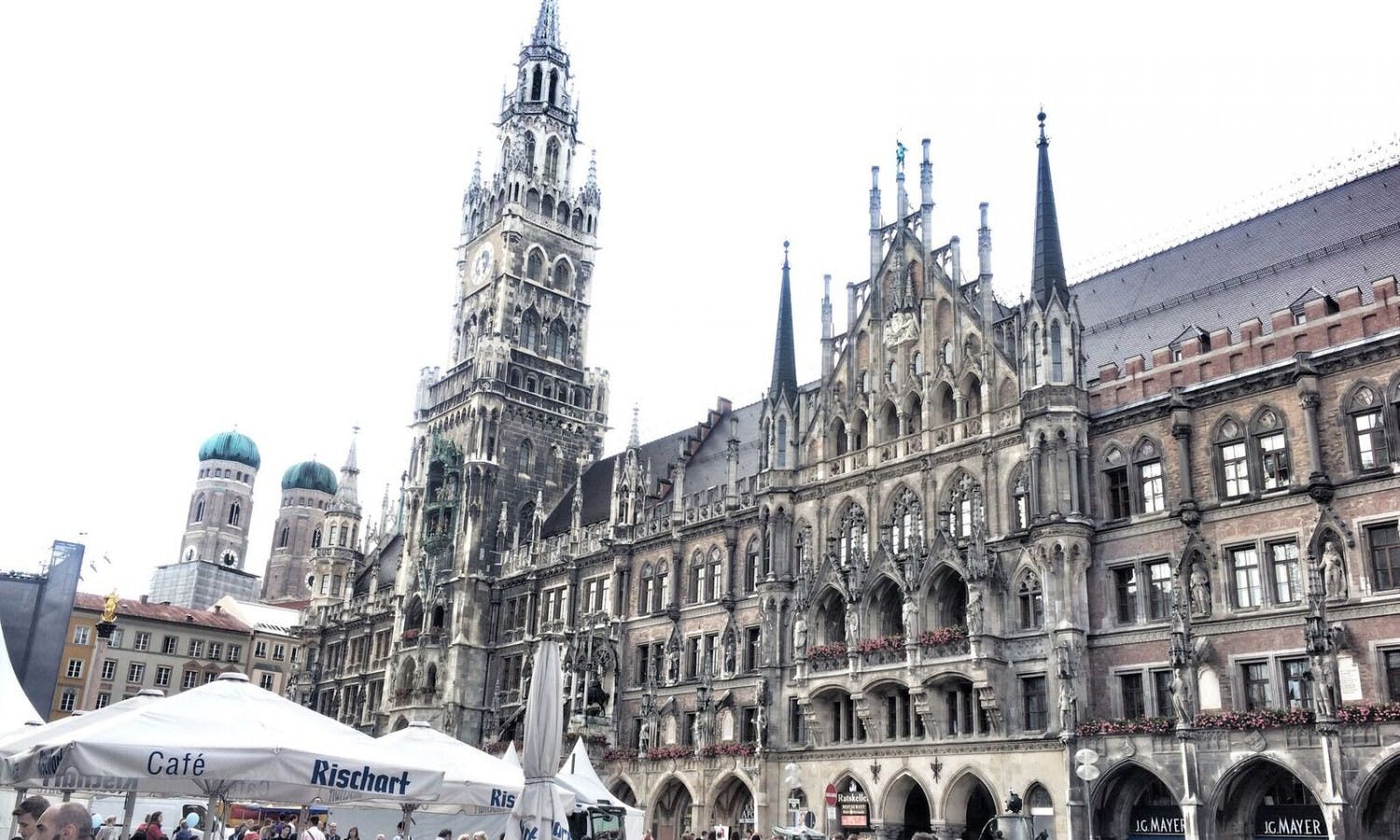
Marienplatz
Marienplatz is dominated by the bell tower of the Alter Peter or Peterskirche (St Peter’s Church), the oldest church in the city. The most impressive church, however, is the Frauenkirche (Cathedral of Our Lady), built between 1468 and 1488 in the Gothic style on the remains of an ancient Roman basilica. With its brick façade, topped by two columns of 99 meters, the Frauenkirche has a gloomy and severe appearance. At the entrance of the cathedral, one tile bears the imprint of a foot, which legend tells is the impression of the Devil. It’s said that the church builders challenged Satan to a bet, claiming that they could build a cathedral with no windows. Looking towards the altar from the footprint, the windows are obscured by columns and so the builders tricked the devil, who realized it only after the consecration of the church.
Your cultural itinerary continues to the Residenz, the Royal Palace of Munich, which for centuries was the seat of the ducal government, elector princeps and finally the kings of Bavaria. Construction was started around 1400, when the Wittelsbach family realized they were no longer so well-liked that they couldn’t live in a fortified dwelling. Characterized by a mixture of Renaissance, Baroque, Rococo and Classical style, the Residenz will amaze you with the richness of its furniture, decoration and frescoes. Inside the royal complex, in the city center, is the Cuvilliés Theater: a jewel of the Rococo style and one of Europe’s most beautiful theaters.
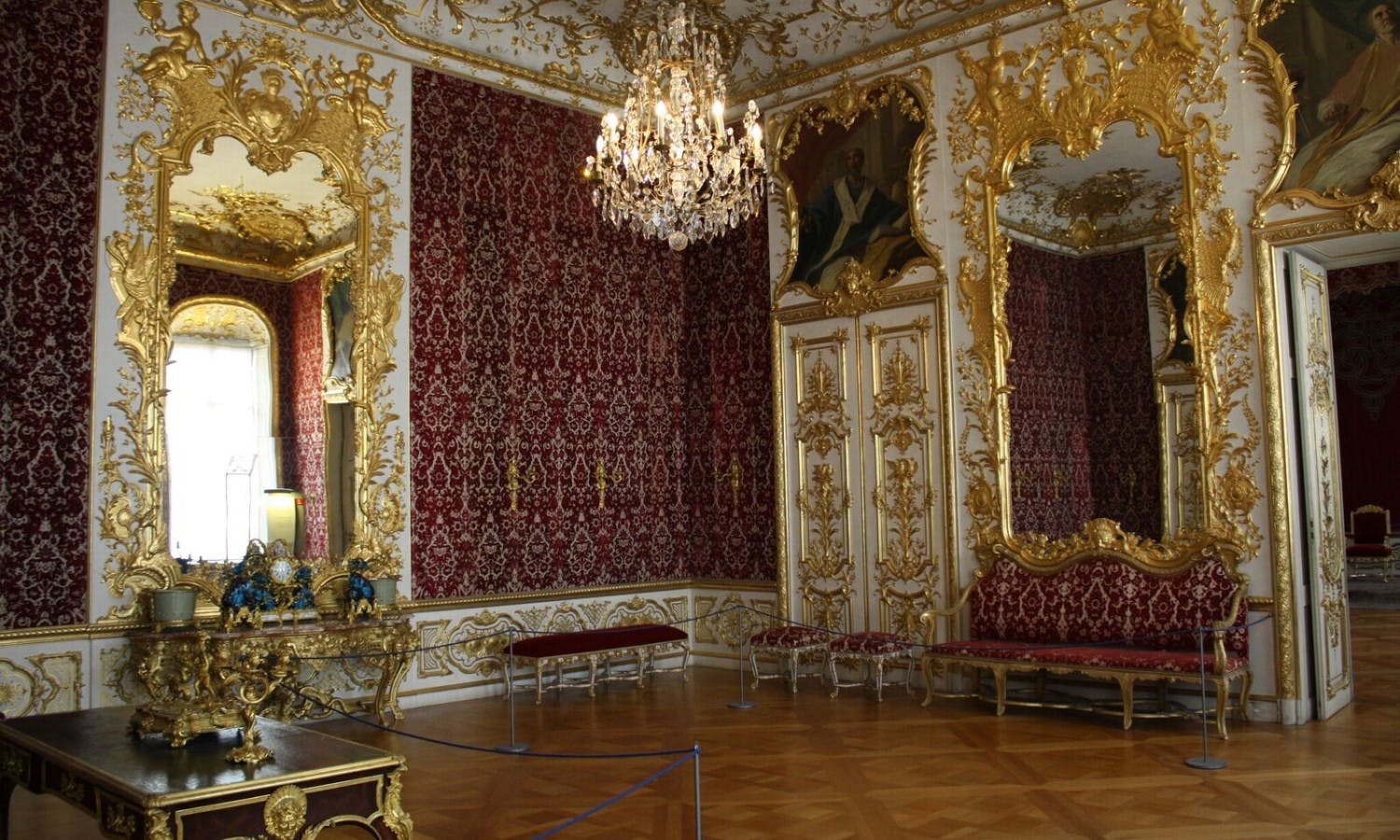
The Residenz, the Royal Palace of Munich
Also worth seeing is the Schloss Nymphenburg Palace, built in the seventeenth century as a summer residence of the Wittelsbach royal family and marked by a baroque facade and a beautiful park with gardens, canals, lakes and tree-lined avenues. However, the true fairytale is elsewhere. With a little more effort you’ll discover the famous castles of Ludwig II of Bavaria about a hundred kilometers from Munich, close to the Austrian border. Accused of squandering the money of the kingdom for the construction of castles, declared insane, deposed and perhaps murdered, Ludwig II became the eventual fortune of Bavaria – his extravagant residences drive the tourist revenues of today.
The Ludwig castles itinerary takes you through a landscape dotted with lush forests and beautiful lakes at the foot of the Alps and begins on a small island in the middle of Lake Chiemsee: the Herreninsel. Here, from 1878, King Ludwig built the Herrenchiemsee Castle on the model of Versailles.
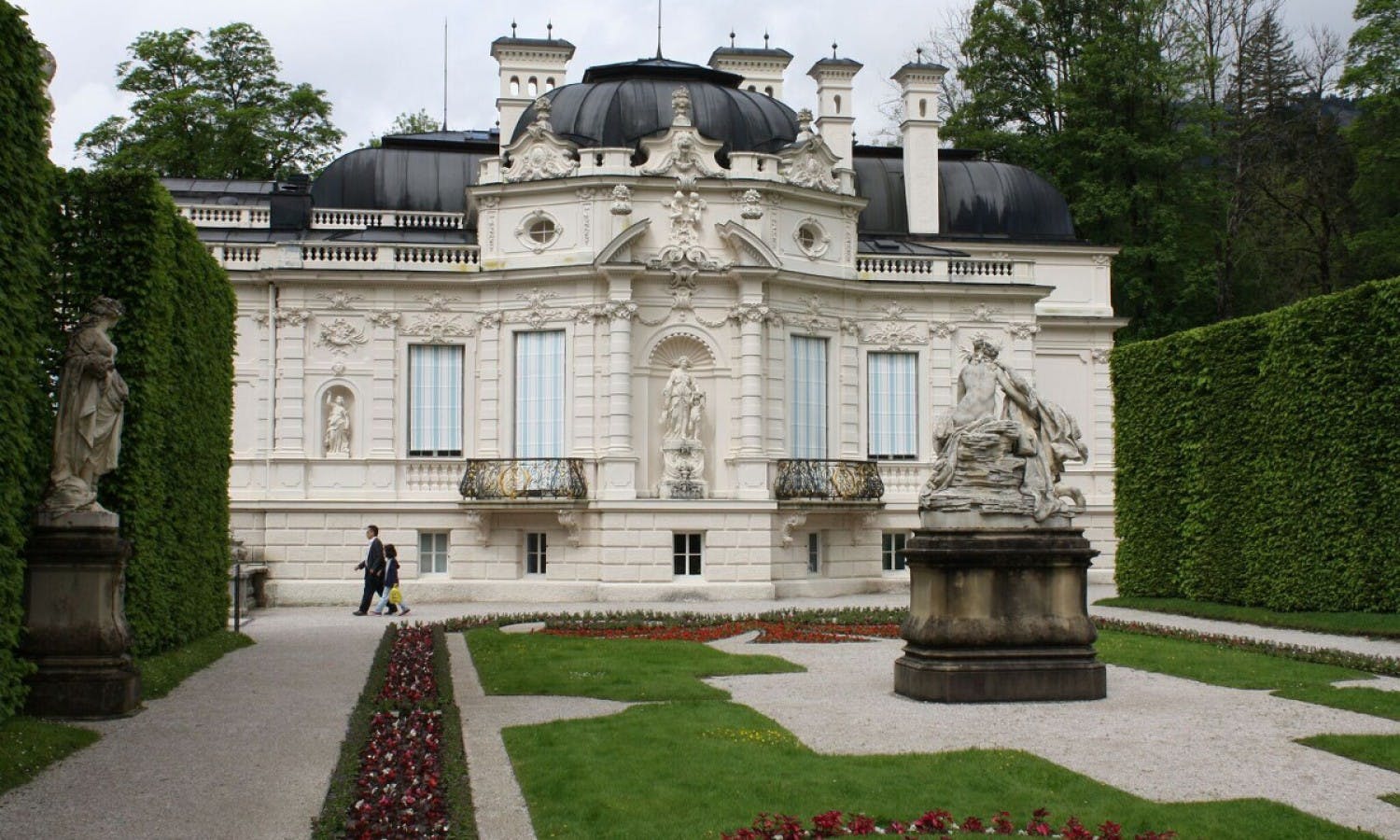
Linderhof Castle
Last but not least, Neuschwanstein Castle is the place where all dreams come true. Even if you no longer believe the stories of princes, wizards, evil witches and princesses, you cannot help the impression of living in a fairy tale here. The visual impact of this castle is so stunning that even Walt Disney took inspiration for the setting of his stories. A symbol of medieval Romanticism, anchored on a rock and surrounded by a landscape of alpine lakes, the Neuschwanstein is the triumph of Ludwig’s melancholy fantasy and his homage to Wagner, whose works are the protagonists of the frescoes. The sovereign wasn’t able to enjoy a lot of his creation because he lived only 172 days within the castle before drowning in a lake under mysterious circumstances. In front of Neuschwanstein is Hohenschwangau Castle, where Ludwig spent his childhood: a medieval fortress bought and restored by Maximilian II, Ludwig’s father.
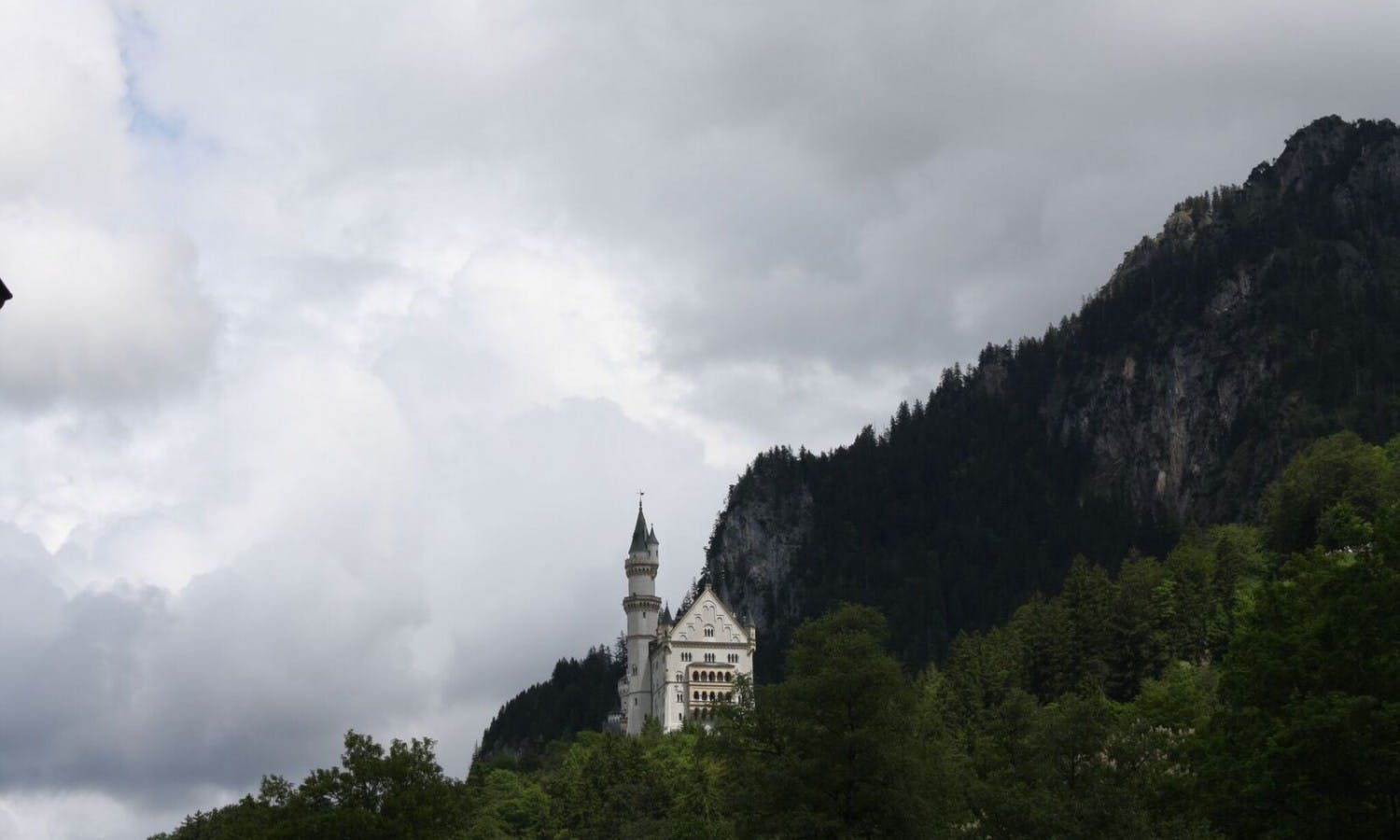
Neuschwanstein Castle
After days spent visiting castles, there’s nothing better than to bolster oneself with a tasty and fresh lager, the Munich drink par excellence and famous all over the world as the star of the Oktoberfest collective ritual. In large and crowded breweries – pleasantly enriched by biergarten (beer gardens) – you’ll grasp the true essence of goliardic and provincial Munich so cheerfully attached to its folk traditions. The city is dotted with breweries, but the most famous is the Hofbräuhaus, established in 1589 for the production of beer for the court of the Duke Wilhelm V. Don’t try to ask for less than one liter of beer!
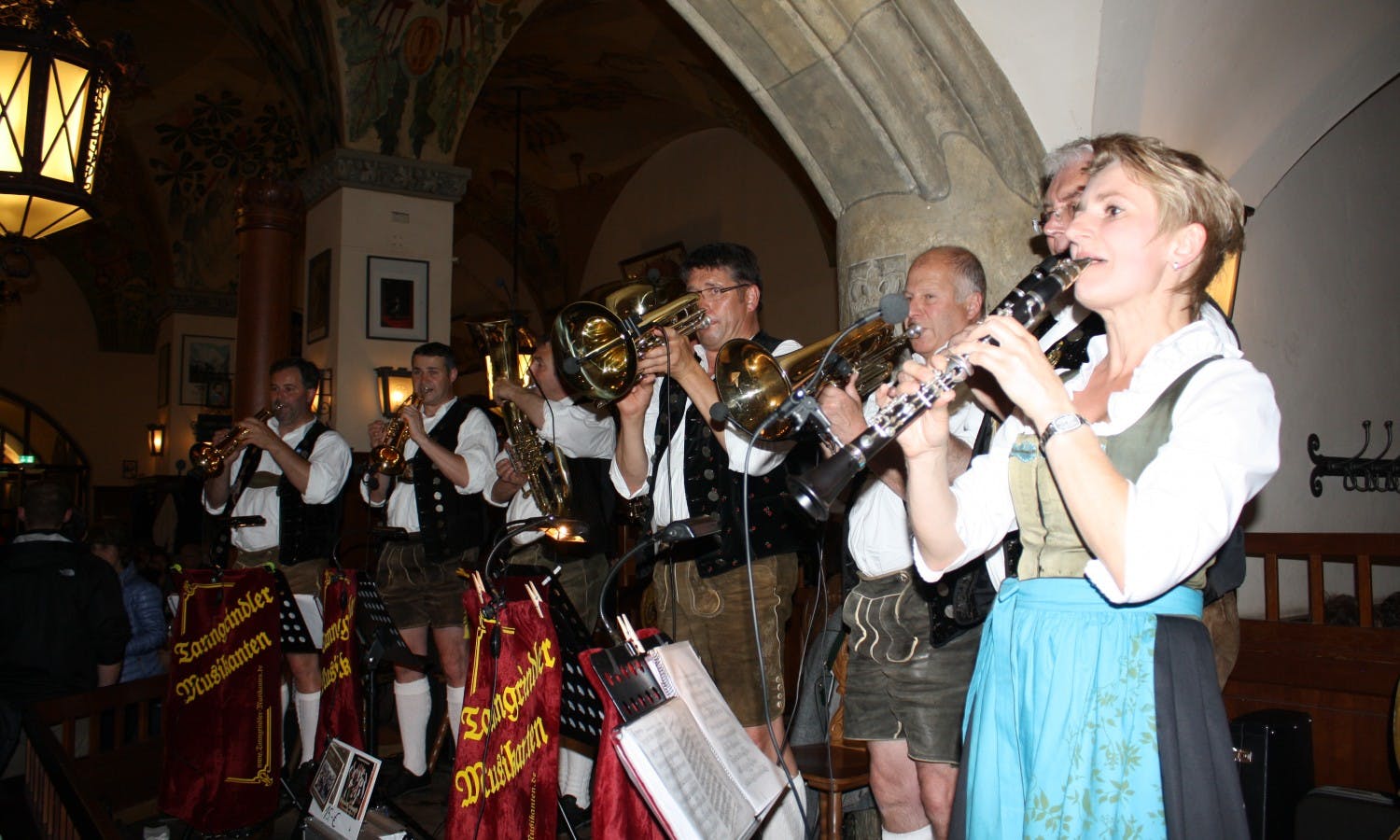
Biergarten
